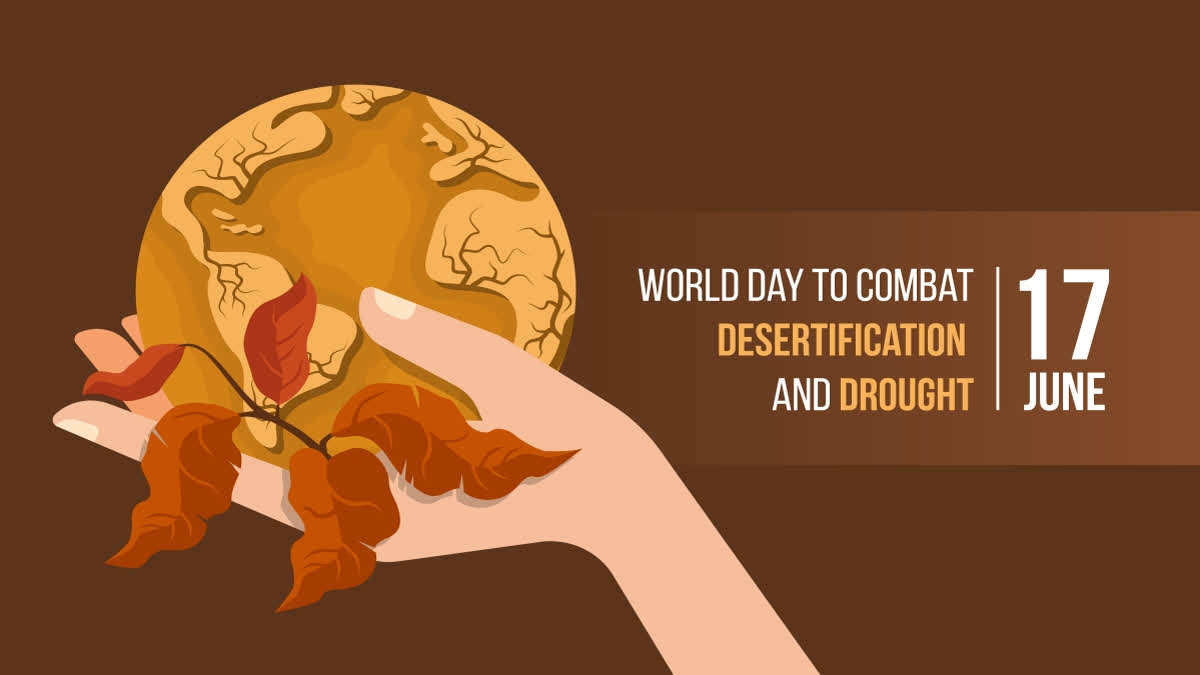June 17 2024 marks the 30th anniversary of the Bonn-based United Nations Convention to Combat Desertification (UNCCD)— the sole legally binding international treaty on land management and drought; one of the three Rio Conventions alongside climate change and biodiversity.
About Desertification and Drought Day: Officially declared by the United Nations General Assembly in 1994 (A/RES/49/115), Desertification and Drought Day, marked annually on 17 June, has the following objectives:
- To promote public awareness of the issues linked to desertification, land degradation and drought
- To showcase human-led solutions to prevent desertification and reverse intensifying droughts
- To strengthen the implementation of the United Nations Convention to Combat Desertification
Theme 2024: The theme chosen for this year’s Desertification and Drought Day — “United for Land: Our Legacy. Our Future.” — seeks to mobilise all parts of society in support of sustainable land stewardship.
What is Desertification? Desertification is a form of land degradation in which a comparatively dry land area becomes more and more arid, normally losing its bodies of water along with its wildlife and vegetation. This is a result of a variety of factors, such as climate change and human activities.
Impact of Desertification and Drought: From 2015-2019, the world lost at least 100 million hectares of healthy and productive land each year, according to the United Nations Convention to Combat Desertification (UNCCD) data.
Desertification, land degradation, and drought are among the most pressing environmental challenges of our time, with up to 40 per cent of all land area worldwide already considered degraded.
Desertification and drought are being made worse by rise in erratic and extreme weather patterns due to climate change, which puts tens of millions of people each year at risk of displacement.
To cope with an uncertain future, decision makers will need to adopt resilient water management techniques and technologies as part of a more sustainable approach to land stewardship.
The land sustains every aspect of our lives. It is the foundation of our food systems, with 95 per cent of the world's food produced on agricultural land. However, one third of these lands are currently degraded.
The degradation of land affects 3.2 billion people worldwide, particularly impacting rural communities and smallholder farmers who depend on land for their livelihoods, leading to increased hunger, poverty, unemployment, and forced migration.
Climate change further exacerbates these issues, posing significant challenges to sustainable land management and agriculture, and undermining ecosystems' resilience.
The Importance of Land Restoration
Facts and figures:
- 2.6 billion people depend directly on agriculture, but 52 per cent of the land used for agriculture is moderately or severely affected by soil degradation.
- Land degradation affects 1.5 billion people globally.
- Arable land loss is estimated at 30 to 35 times the historical rate.
- Due to drought and desertification each year 12 million hectares are lost (23 hectares/minute!), where 20 million tons of grain could have been grown.
- 74 per cent of the poor (42 per cent of the very and 32 per cent of the moderately poor) are directly affected by land degradation globally.
Protecting and restoring degraded land is essential to ending poverty and hunger, achieving food security, and improving the livelihoods of millions of people, especially in developing countries. Land restoration has emerged as a critical tool in tackling two of the most pressing challenges of our time: climate change and biodiversity loss.
As we witness the far-reaching impacts of human activities on the environment, restoring degraded land is proving to be a powerful remedy that not only helps combat climate change but also safeguards the Earth’s rich biodiversity.
Desertification in India: From 2015-2019, 30.51 million hectares of India’s total reported land was degraded, according to United Nations Convention to Combat Desertification (UNCCD) data. This means that 9.45 per cent of the country's landmass was degraded as of 2019. This was 4.42 per cent in 2015.
The UNCCD data dashboard released October 25, 2023 also reflected that 251.71 million Indians constituting 18.39 per cent of the country’s population were exposed to land degradation during the same period. Moreover, it added, 854.4 million of the country’s people were exposed to drought from 2015-2018
The Importance of Building Drought Resilience: With climate change exacerbating the frequency and severity of droughts, building resilience against these conditions is crucial. Efficient irrigation systems, such as drip irrigation, deliver water directly to the plant roots, minimising water wastage and optimising hydration are also important.
This method is especially beneficial in regions prone to water scarcity. Additionally, rainwater harvesting during the wet season provides a reliable water source during dry periods, reducing dependency on external sources and enhancing drought resilience.
Indian Government initiatives to prevent desertification
- National Afforestation and Eco-Development Board (NAEB) is implementing National Afforestation Programme (NAP) for ecological restoration of degraded forests and adjoining areas through people's participation. The scheme is implemented through 3 tier institutional set up of State Forest Development Agency (SFDA) at the state level.
- National Mission for Green India (GIM) aims at protecting, restoring and enhancing India’s forest cover by means of plantation activities in forest and non-forest areas. GIM activities were started in the FY 2015-16. A sum of Rs. 594.28 Crores have been released to 15 States namely Andhra Pradesh, Arunachal Pradesh, Chhattisgarh, Himachal Pradesh, Karnataka, Kerala, Manipur, Mizoram, Odisha, Punjab, Uttarakhand, Madhya Pradesh, Maharashtra, Sikkim, West Bengal, and one union territory Jammu & Kashmir for creation of plantation over an area of 1,17,503 hectares. In the last three years (2018-19 to 2020-21), an amount of Rs 298.10 crore has been sanctioned, out of which Rs. 233.44 crore has been utilised.
- Demand driven action oriented research work is carried out through projects under National Mission on Himalayan Studies (NMHS). Certain projects include the development of models for land reclamation, soil conservation and watershed management, etc.
- Integrated Watershed Management Programme (IWMP) is implemented under Watershed Development Component of Pradhan Mantri Krishi Sinchai Yojna, with the objective to develop rainfed and degraded lands.



